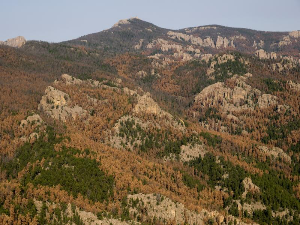From the Rocky Mountain Research Station:
Throughout the Rocky Mountains over the last century, large ponderosa pine trees provided lumber for growing cities and towns, along with fuel and timber for the mining and railroad industries.
Most of these forests are now occupied by dense young and mid-aged forests highly susceptible to being killed by bark beetles and burned by wildfires. These conditions have been exacerbated by fire suppression and urban encroachment. As a result, knowledge is needed to inform management actions directed at restoring and conserving ponderosa pine forests.

